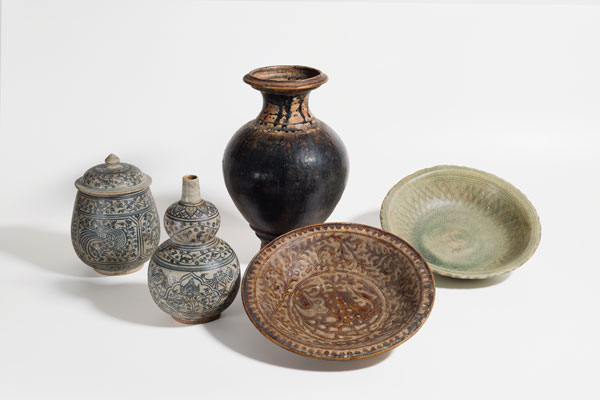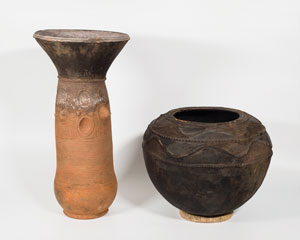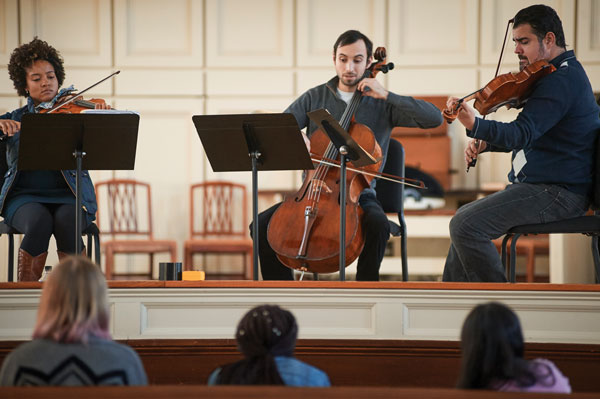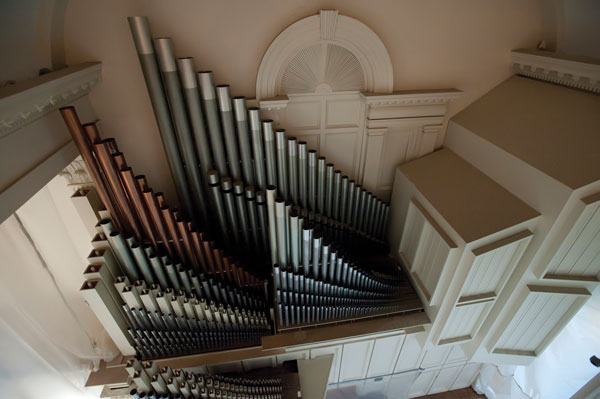Professor’s films screened at the Whitney Biennial
The Whitney Museum of American Art’s 2017 Biennial included two films by visiting art and art history professor Mary Helena Clark, known for her experimental short films.
“It’s an honor to be a part of a show that’s such a high-profile survey of American art, and there are so many exciting artists this year, with really different backgrounds,” Clark said.
Screened by the Whitney in late March, her films Delphi Falls (2016) and The Dragon is the Frame (2014) are very different in their approaches.
Delphi Falls plays with “story and narrative, to test the limitations of identification that we can have with the camera’s point of view,” Clark said. “To what degree can we engage with the world of the film if this eye of the camera is constantly roving?”
The Dragon is the Frame, a tribute to her late friend and artist Mark Aguhar, is a much slower and more personal film. Shot on 16mm film over two years, it focuses on the idea of an image as a clue. With scenes from Alfred Hitchcock’s Vertigo mixed in with observations from her own life, The Dragon is the Frame is part diary and part detective film.
“These two movies exemplify a common idea across all my work, which is using the language of collage in film and video,” Clark said. “My work thinks about how we can use the formal devices of cinema to explore the collapse of more traditional dichotomies of self and other, of interior and exterior.”
— Meredith Dowling ’17
(Image above from visiting professor Mary Helena Clark’s film Delphi Falls)
The Longyear gets fired up

Ceramics from Thailand, 13th–16th century CE. Photo by Mark Willaims
Earth to Fire: Pottery Technologies Around the World, on display until June 4 in the Longyear Museum of Anthropology, takes a fresh look at pottery by focusing on how various cultures handled discrete steps in its production. The exhibition probes a variety of questions, from how South African Zulu communities shaped pottery vessels to how Peru’s Sicán and Chimú cultures used reduction firing to achieve a rich black finish.
“We wanted to look beyond the aesthetic qualities of the objects and take a more functional approach,” explained assistant curator Christy DeLair. “We asked, ‘Why did people make things the way that they did, how did they figure out how to make them the way that they did, and how does that knowledge get passed down?’”

Pot stand and globular pot from Nupe, Nigeria. Photo by Mark Williams
Student curatorial assistants Sierra Sunshine ’17, Cameron Pauly ’19, and Carrie Zhang ’20 helped to plan the exhibition. Each student focused on a different region, conducting research and updating information on museum objects, which are part of the permanent collection. They also wrote labels and designed their sections.
“This was a great chance for me to have firsthand experience on how [planning an exhibition] works,” Zhang said. “The formalized approach was very intuitive, and I was able to learn a lot.”
Some Colgate anthropology classes visited the exhibition, and DeLair works with professors to bring relevant objects into their classrooms.
— Alec Jones ’19
Harlem Quartet jazzes up the classics

Photo by Zoe Zhong ’17
Beats from Cuba and Brazil mixed with the classics when the internationally acclaimed Harlem Quartet performed at Memorial Chapel on February 19. The Grammy Award–winning group, founded in Harlem in 2006, has become known for incorporating diverse styles of music into their performances.
With Ilmar Gavilan and Melissa White on violin, Jaime Amador on viola, and Felix Umanky on cello, the group started its performance with one of Mozart’s most famous quartets, String Quartet No. 17, “The Hunt,” in B-flat major, K. 458. They followed with Brazilian chart-topper “The Girl from Ipanema.”
“The Harlem Quartet’s performance was, in a word, breathtaking,” said Erin Hoffman ’19. “As a violist in the Colgate Chamber Players, I pay particular attention to the way instrumentalists interact with one another during performances, and I was astounded by the quartet’s unwavering synchronization.”
The quartet’s next piece was “Guaguanco” by Guido Gavilán, which is named after and inspired by the eponymous Cuban rhythm and dance. The musicians added percussion to the piece by tapping on their instruments.
It was amazing to hear how the group could flit between themes in perfect unison. They made their music come alive.” — Erin Hoffman ’19
Hoffman was especially impressed by how the quartet played its last piece, String Quartet No. 1 in G minor, Op. 27, by Edvard Grieg. “It was amazing to hear how the group could flit between themes in perfect unison. They made their music come alive,” she said.
The final notes of this piece brought everyone in the chapel to their feet for a standing ovation, encouraging the quartet to return for an encore performance — of “Take the ‘A’ Train,” the song that started their foray into jazz.
— Meredith Dowling ’17
El Gigante de Paruro y Victor Mendivil Cusco

Photo by Martin Chambi, 1925
In the exhibition Our People, Our Land, Our Images, the photography styles on display range from straightforward documentary accounts, such as this image, to altered images combining overlays and collage. But the works — indigenous people photographed by indigenous photographers — stand united in exploring their makers’ connections to their lands, communities, and traditions. The photographers come from the United States, Canada, Peru, and New Zealand; they are 19th-century pioneers, established contemporary practitioners, and members of the next generation of emerging artists.
On display in the Picker Art Gallery through May 21, the traveling show is accompanied by a display of indigenous artists’ works from the permanent collections of both the Picker and the Longyear Museum of Anthropology. Related lectures and film screenings include a short by two Native American filmmakers, who also visited Native American art and women’s studies classes.
Go figure: A note-able birthday

The Franklin G. Brehmer Holtkamp Organ in Memorial Chapel just turned 40. Here are some key facts:
1976: built by walter holtkamp jr.
4 groups: University Chorus, University Orchestra, Chamber Singers, and Chamber Players use it for accompaniment
50 ranks: (sets) of pipes
2 religious services: Protestant and Roman Catholic services feature it
4 organists have had residencies at Colgate
6 Colgate presidential inaugurations have featured organ music
— Melanie Oliva ’18






